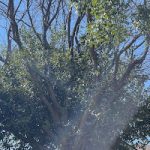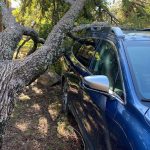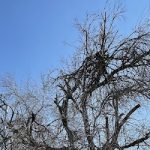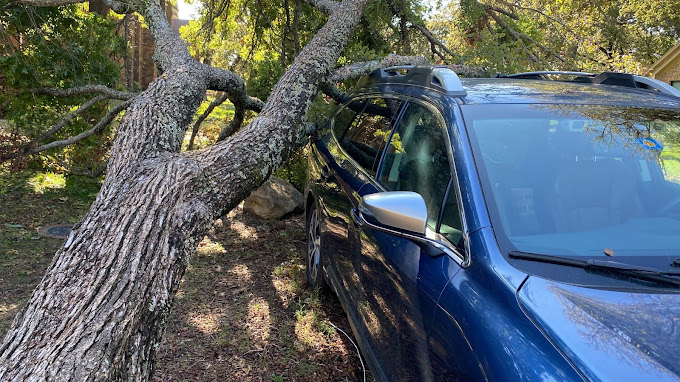
How to Handle Tree Damage After a Storm in DFW Metroplex
August 20, 2025
Severe storms in the Dallas–Fort Worth area often result in fallen trees, broken limbs, and structural damage to residential properties. Knowing how to assess and respond to tree damage after a storm is critical to maintaining safety, avoiding additional property loss, and ensuring insurance compliance.
Common Signs of Storm-Related Tree Damage
Tree damage can range from obvious to subtle. It’s important to inspect your property carefully after high winds, heavy rain, or hail. Be alert to the following signs:
- Large broken or hanging branches
- Trees leaning more than before
- Uprooted trees or visible movement at the base
- Bark stripped or torn
- Cracks where major limbs meet the trunk
- Exposed deadwood or weakened branches
- Limbs resting on power lines
- Soil heaving or separation near the roots
Damage may not always be visible from ground level. If anything looks abnormal or unsafe, consult a certified arborist immediately.
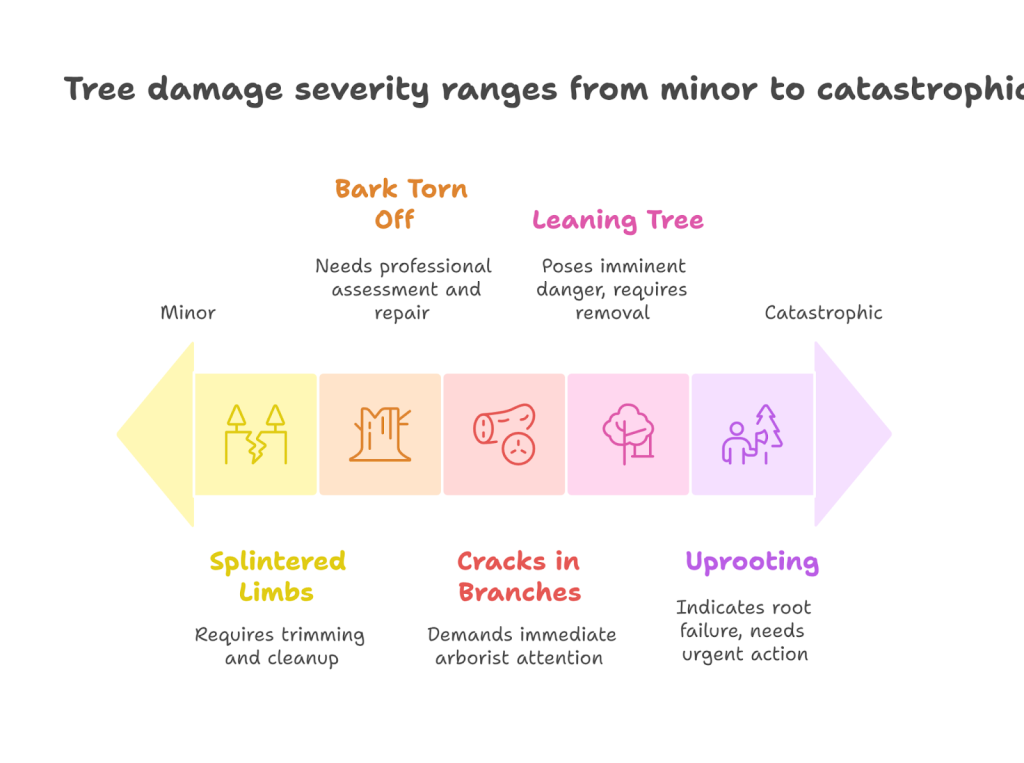
Why Immediate Action is Necessary
Failing to address tree damage promptly can result in:
- Injury Hazards: Falling limbs can harm residents, pets, or passersby.
- Additional Property Damage: Weak branches may fall during the next storm or wind event.
- Insurance Complications: Many policies require homeowners to take reasonable steps to prevent further loss. Delays may be seen as negligence.
- City Code Violations: Some municipalities in DFW require timely cleanup of fallen or hazardous trees. Fines may apply.
- Pest Infestations: Damaged trees are more susceptible to insect activity, including termites and carpenter ants.
Timely professional inspection and cleanup reduce the likelihood of secondary issues.
Frequent Mistakes to Avoid After a Storm
-
Assuming No Damage Without Inspection
Superficial appearance can be misleading. Structural issues may be hidden in the canopy or root system. -
Attempting Hazardous Tree Work Without Experience
Using chainsaws, working at height, or cutting without proper planning can result in serious injury or property damage. -
Hiring Unqualified Contractors
After storms, it is common for non-certified or uninsured individuals to solicit tree work. This poses legal and financial risks. -
Improper Debris Disposal
Bulk pickup in DFW cities follows specific guidelines. Incorrectly stacked or oversized piles may result in missed collection or citations.
What to Do After Storm Tree Damage: Step-by-Step
Step 1: Ensure Safety
Do not approach trees entangled with power lines or those visibly leaning. Avoid standing beneath damaged limbs.
Step 2: Document the Damage
Take photographs of the tree, surrounding structures, and affected areas. Capture wide shots and detailed close-ups to support insurance claims or professional assessments.
Step 3: Contact a Certified and Insured Tree Care Professional
Choose a provider with experience in storm response. Certification ensures accurate evaluations and safe removal procedures. Insurance coverage protects you from liability during the work.
Step 4: Notify Your Insurance Company
If a tree has caused damage to your home, fencing, or driveway access, provide your insurer with photos and the tree professional’s report. Prompt action helps support your claim.
Step 5: Manage Cleanup in Compliance with Local Regulations
Smaller limbs may be bundled according to city guidelines. Larger debris should be removed professionally. Do not place branches over neighboring fences or in unauthorized locations.
When You Can Manage Tree Damage and When to Seek Help
Homeowners may handle:
- Small branches already on the ground
- Light debris that does not require tools or climbing
- Situations with no threat to people, structures, or utilities
Professional services are strongly recommended for:
- Overhead, cracked, or hanging branches
- Leaning trees or visible root displacement
- Damage near buildings, driveways, or electrical lines
- Evidence of decay, rot, or pest activity
If there is any uncertainty, hiring a certified professional is the safest and most effective approach.
Preventive Tree Care Before Future Storms
Tree damage is not always preventable, but regular maintenance greatly reduces the risk:
- Annual Trimming/Pruning: Removes weak, dead, or overgrown limbs
- Routine Arborist Assessments: Detects early structural or root issues
- Proper Mulching and Deep Watering: Promotes stable root growth
- Proactive Removal of Diseased Trees: Avoids unexpected failures during severe weather
Schedule preventive work in early spring or fall when demand is lower and professionals are more readily available.
Tree Health Warning Signs to Monitor
Be proactive by monitoring your trees for:
- Bark peeling in large sheets
- Fungus or mushroom growth near the trunk
- Hollow-sounding trunks when tapped
- Cracks at major branch junctions
- Canopy dieback (dead limbs at the top of the tree)
These symptoms indicate structural weakness and increased risk of failure during high winds or storms.
Tree Species in DFW That Are Prone to Storm Damage
Some species are more vulnerable due to weak wood or shallow roots:
- Bradford Pear: Brittle branch structure, prone to splitting
- Silver Maple: Fast growth leads to weak limbs
- Arizona Ash: Susceptible to decay, short lifespan
- Hackberry: Inconsistent structural integrity
Homeowners with these trees should schedule regular inspections and consider replacement with hardier, wind-resistant species.
Addressing a Neighbor’s Potentially Hazardous Tree
If a neighboring tree appears damaged or poses a risk to your property:
- Approach the conversation politely and with concern
- Offer to share contact information for a professional you trust
- Suggest a joint inspection
- Follow up in writing if the issue remains unresolved
If the tree causes damage later, prior documentation may assist with insurance claims or legal matters.
Frequently Asked Questions
What is the first step I should take after tree damage?
Stay at a safe distance, document the situation, and contact a tree care professional.
Can I be held responsible if my tree damages someone else’s property?
Yes. Property owners are expected to maintain their trees in a reasonably safe condition.
Should I file an insurance claim immediately?
Yes, especially if your home, fence, or access is impacted. Always document first.
Do all tree services offer storm damage response?
No. Choose a provider experienced in emergency tree removal and insurance coordination.
How do I know if a leaning tree is an emergency?
If it wasn’t leaning before or the soil at the base has shifted, it should be evaluated immediately.
Will the city collect fallen limbs?
Only if they are cut, bundled, and stacked according to municipal guidelines. Check your city’s public works department.
Can a split trunk be saved?
Some splits may be stabilized with cabling or bracing. However, deep vertical splits often require full removal.
Final Thoughts and Next Steps
Storm-related tree damage should not be taken lightly. Acting quickly ensures personal safety, protects your property, and reduces complications with insurance or city enforcement.
If you need professional assessment, emergency response, or assistance with safe tree removal in DFW, Quality Tree Service DFW is available. Our team is licensed, insured, and experienced in storm recovery across North Texas.
Contact us today to schedule a consultation or emergency inspection.


